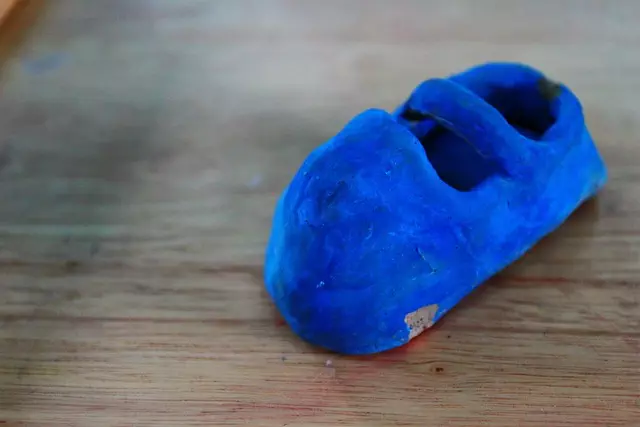Grout sealing is crucial for maintaining tile surfaces in high-moisture areas like bathrooms and kitchens, preventing mold growth and stains by creating a non-porous barrier. Effective grout sealing protects against unsightly intruders, preserving aesthetics and functional integrity. Choosing the right sealant based on grout type, environmental conditions, traffic flow, and product specifications is key. Proper application, regular maintenance, and touch-ups every 1-2 years ensure optimal performance in preventing mold and stains. Avoiding common mistakes like inadequate preparation, incorrect sealants, and lack of maintenance extends the lifespan of grout sealing.
Grout sealing is an essential step in maintaining tile surfaces, preventing the onset of unsightly stains and mold growth. In this comprehensive guide, we explore grout sealing as a powerful tool for preserving your tiled spaces. Understanding the impact of mold and stains on grout, you’ll discover how the right sealant can transform your tile investment. From choosing the optimal sealer to application techniques and common mistakes to avoid, we provide insights to ensure long-lasting protection against stain prevention.
Understanding Grout Sealing: Why It's Essential for Tile Surfaces

Grout sealing is a crucial step in maintaining tile surfaces, especially in areas prone to moisture like bathrooms and kitchens. It involves applying a protective layer over the grout lines, which acts as a barrier against water, dirt, and other substances that can cause stains or promote mold growth. This process is essential for several reasons. Firstly, grout is porous and easily absorbs liquids, making it susceptible to staining. By sealing the grout, you create a non-porous surface that repels moisture, preventing the penetration of stains and making cleaning easier.
Moreover, grout sealing plays a vital role in mold prevention. Mold thrives in damp environments, and grout lines often retain moisture due to their porous nature. A sealed grout will dry faster after cleaning or exposure to water, reducing the chances of mold colonization. In terms of aesthetics, sealed grout maintains the integrity of tile installations, keeping them looking new for longer periods. This is particularly important in commercial spaces where tiles are subject to constant use and exposure to various substances. Effective grout sealing is a game-changer in preserving the beauty and functionality of tiled surfaces, ensuring they remain stain-free and mold-resistant.
The Impact of Mold and Stains on Grout: A Comprehensive Overview

Grout, often overlooked, plays a crucial role in maintaining the aesthetic and functional integrity of our spaces. When it comes to preserving the beauty of tiled surfaces, grout sealing is an effective strategy against unsightly mold and stain buildup. These unwelcome intruders can not only detract from the visual appeal but also pose health risks.
Mold, in particular, thrives in dark, damp environments, making grout areas prone to its growth. Stains, on the other hand, are caused by various factors like spills, foot traffic, and exposure to harsh chemicals. Regular cleaning might not be enough; thus, grout sealing becomes indispensable for long-lasting protection. Grout sealant creates a protective barrier, preventing mold and stains from penetrating the grout lines, ensuring they remain clean and fresh.
Types of Grout Sealants: Exploring the Options Available

Grout sealing is an effective method to prevent mold and stains, offering a range of options tailored for specific needs. The most common types include silicone-based sealants, which are known for their water resistance and flexibility, making them ideal for high-moisture areas like bathrooms. Acrylic sealants provide a cost-effective alternative with good stain repellency but less flexibility compared to silicones. Epoxy grout sealants stand out for their superior durability and strength, suitable for heavy-duty applications where long-lasting protection is essential.
Each type has unique properties, catering to different surfaces and levels of moisture exposure. Choosing the right grout sealant depends on factors like material compatibility, desired flexibility, and environmental conditions. Understanding these options enables homeowners and professionals to select the most effective solution for grout sealing, thereby ensuring a cleaner, more aesthetically pleasing space while preventing unsightly stains and mold growth.
Choosing the Right Grout Sealer: Factors to Consider for Optimal Protection

When selecting a grout sealant for stain prevention, several key factors come into play to ensure optimal protection against mold and stains. First, consider the type of grout you have—different sealers are formulated for ceramic, porcelain, or natural stone grouts. Each material has unique properties that require specific sealer types. Additionally, understand your space’s environmental conditions; high humidity levels necessitate more robust sealers designed to resist water absorption and mold growth.
The size and traffic flow in the area also matter. High-traffic zones, like bathrooms or kitchens, demand durable sealants that can withstand frequent contact and potential spills. Look for sealers with quick drying times if you need to restore your space quickly without compromising protection. Always read product labels and follow manufacturer instructions for application; some sealers may require specific techniques or curing conditions to achieve maximum effectiveness in grout sealing to prevent mold and stains.
Application Techniques for Long-Lasting Stain Prevention

When applying grout sealant for stain prevention, several techniques can ensure long-lasting results. The first step is to thoroughly clean the grout lines before sealing. This involves removing any loose debris, dust, or existing stains using a grout cleaner or a mixture of water and mild detergent. Once the grout is pristine, apply the sealant with a caulk gun, ensuring even distribution along the lines. Start at one end and work methodically across the entire surface to avoid missing spots.
For optimal protection against mold and stains, consider using a high-quality sealant designed for grout. These products often contain silicone or polyurethane formulations that create an impenetrable barrier. After application, allow the sealant to cure completely according to the manufacturer’s instructions. Regular touch-ups every 1-2 years can maintain the protective seal, preventing the accumulation of dirt and moisture that leads to mold and stain issues in grout.
Benefits of a Properly Applied Grout Sealing System

A properly applied grout sealing system offers numerous benefits, especially in preventing mold and stains from forming in your tiles. Firstly, it creates a protective barrier that blocks out unwanted substances, ensuring that moisture and dirt cannot penetrate the grout lines. This is crucial as it stops the growth of mold and algae, which can cause not only unsightly discoloration but also health issues for occupants due to their toxic nature.
Additionally, grout sealant enhances the overall aesthetics of tiled surfaces by keeping them looking fresh and clean. By filling in the tiny gaps between tiles, it eliminates visible dirt and grime accumulation, making cleaning much easier. This is particularly beneficial in high-traffic areas like kitchens and bathrooms where stains can quickly build up. A sealed grout system thus provides a seamless finish, adding to the longevity and value of your tiled surfaces.
Common Mistakes to Avoid During Installation and Maintenance

When it comes to grout sealing for stain prevention, there are several common mistakes that homeowners often make during installation and maintenance. One of the biggest errors is neglecting to properly prepare the grout surfaces before applying the sealant. This includes cleaning the grout lines thoroughly to remove any dirt, grease, or existing stains, as these can compromise the effectiveness of the sealant. Using an inappropriate sealant for your specific needs is another mistake; not all sealants are created equal, and choosing the wrong one could lead to poor performance or even damage to your grout.
Another common pitfall is failing to follow the manufacturer’s instructions regarding application and curing times. Grout sealing requires patience; rushing the process can result in an uneven finish or suboptimal protection against mold and stains. Additionally, neglecting regular maintenance, such as reapplying sealant every few years or when visible wear occurs, will eventually render your initial efforts futile. Regular cleaning with non-abrasive cleaners and a soft brush also plays a vital role in maintaining the integrity of the grout sealing for prolonged stain prevention.
Maintaining Your Grout Sealant: Tips for Preserving Your Tile Investment

Regular maintenance is key to preserving your grout sealant and keeping your tile investment looking its best. Start by regularly cleaning your tiles with a mild detergent and warm water, avoiding harsh chemicals that can erode the sealant over time. The use of grout sealing products specifically designed to prevent mold and stains will significantly prolong the life of your sealant.
In addition to regular cleaning, it’s important to inspect your grout sealant periodically for any signs of damage or wear. Repairs should be made promptly to maintain the effectiveness of the sealant in protecting against mold and stains. Protecting your tiles from heavy foot traffic and spills can also prevent unnecessary strain on the sealant, ensuring its longevity and keeping your tile work looking pristine.
